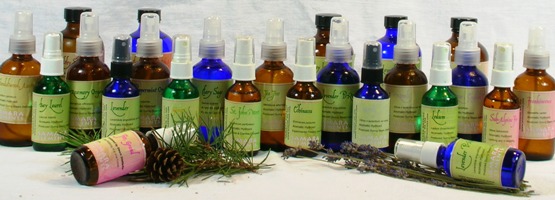Hydrosols
 Hydrosols are the condensate waters left over after essential oils are produced via steam- or hydro-distillation. They contain a small amount of the essential oil dissolved in the water and can be used directly on the skin.
Hydrosols are the condensate waters left over after essential oils are produced via steam- or hydro-distillation. They contain a small amount of the essential oil dissolved in the water and can be used directly on the skin.Continued in Overview tab.
|
This is the most widely used and most economical method of extracting essential oils and hydrosols. The process requires a great deal of skill and knowledge as there are many variables involving time, temperature and type of plant being distilled. Also, some plants are distilled immediately upon harvest, some are partially dried and some may require to be completely dry before distillation. Basically, the plant material is placed above boiling water (water distillation) or in a separate chamber where steam passes through (steam distillation). The latter is sometimes called dry distillation if done under pressure. The advantage of steam distillation over water distillation is that raw material does not come in contact with boiling water. The heat and steam cause the structure of the plant cells to break down, releasing the essential oil. The steam and essential oil are then channeled through a cooling coil, where they condense and return to a liquid state, comprised of both water and essential oil. Most essential oils will float to the top; heavier oils such as clove will sink to the bottom. The two are then separated, using a separatory funnel or by siphoning. The water remaining after this process is called a hydrosol and contains minute amounts of the essential oil and other water-soluble plant constituents.
A hydrosol should not be confused with manufactured floral waters where an essential oil is mixed with water. In a true hydrosol, the essential oil is dissolved in the water and is an inseparable part of it. The single note hydrosols that we sell are true hydrosols and the essential oil should not separate from the water. However, we recommend shaking them gently before use "just in case".





